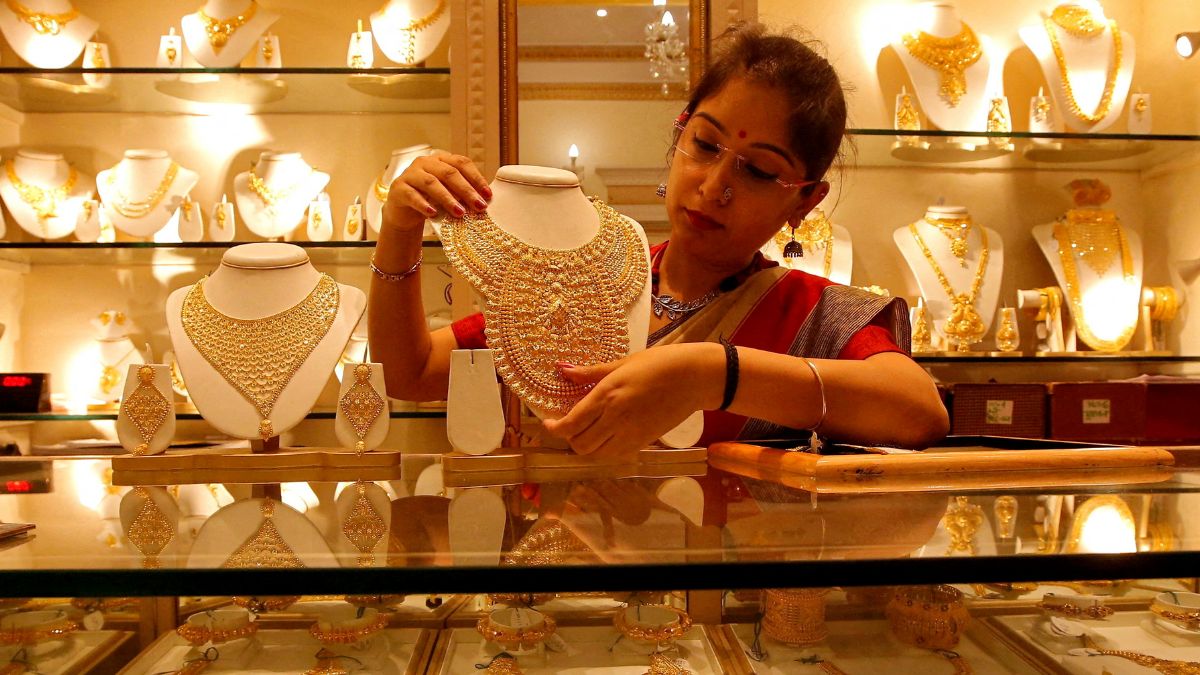Are Indians buying less gold as yellow metal prices hit record high?
 A salesperson displays a gold necklace inside a jewellery showroom | REUTERS
A salesperson displays a gold necklace inside a jewellery showroom | REUTERS
Be it the naming ceremony of a child or a ‘simple’ wedding, all that glitters is most definitely gold if you see it in India. India’s obsession with gold is age-old. But with the yellow metal’s prices on fire, will India’s gold obsession melt away?
Gold prices hit a record high of ₹1,01,078 per ten grams on Monday morning, June 16, on the Multi Commodity Exchange (MCX).
Owing to the Israel-Iran conflicts, the high demand for the safe-haven asset has raised its prices to a new benchmark. The decline in Global equity markets and rising crude oil prices have only contributed to the rate hike of the precious metal.
Getting a shiny little ornament in this economy might burn a hole in your wallet.
Apart from geopolitical tensions, a key factor for gold prices is the upcoming US Federal Reserve (Fed) policy meeting. Despite easing inflation, the Fed may not cut rates on June 18 due to persisting uncertainty about the impact of the US tariff policy.
The Trump administration’s tariff announcements in April 2025 have left people unclear about the future of their economy. Investors, aware of the potential fallout from these tariffs, have turned to gold as a safe haven.
The World Gold Council (WGC) recognises gold as a highly liquid asset, which is no one’s liability, carries no credit risk, and is scarce, historically preserving its value over time.
“Investors have been able to recognise much of gold’s value over time by maintaining a long-term allocation and taking advantage of its safe-haven status during periods of economic uncertainty,” WGC stated in their latest report, Gold as a strategic asset: 2025 edition.
Rising gold prices and consumer behaviour in India
The demand for jewellery in India has shifted to only need-based purchases, particularly for weddings. Additionally, the soaring prices of gold have led consumers to trade in old jewellery for new, according to anecdotal reports given to the World Gold Council.
“Reports suggest that 40–45 per cent of purchases now involve some form of exchange,” according to WGC.
Although festival buying has continued, it remains localised, often linked to specific regions and communities. At the same time, there appears to be an increase in Indian consumers buying gold as an investment. Anecdotal reports suggest that demand for bars and coins has remained strong, even at higher prices.
“Even at such a high rate of gold, there is no decrease in demand; the jewellery shops were flooded with people, especially families,” said Radhika Jayan, a 29-year-old Chennai-based employee at a global conglomerate prepping for her wedding in September.
However, the younger generation increasingly views gold not as jewellery but as an investment. “I don’t obsess over gold jewellery like my mother; I wouldn’t want to spend so much money on it for my wedding, too. If I am buying gold, I’d only buy it as an investment,” says Devika Rajesh, an 18-year-old photography student from Kochi.
The gold price surge is, in fact, a direct result of geopolitical instability and changing market dynamics.
While fluctuations are possible, analysts predict that demand for gold will continue as long as such uncertainties persist in the global economy. Investors will continue to rely on gold for diversification and risk management while general consumers shift from consumption-driven purchases to wealth preservation.
Business